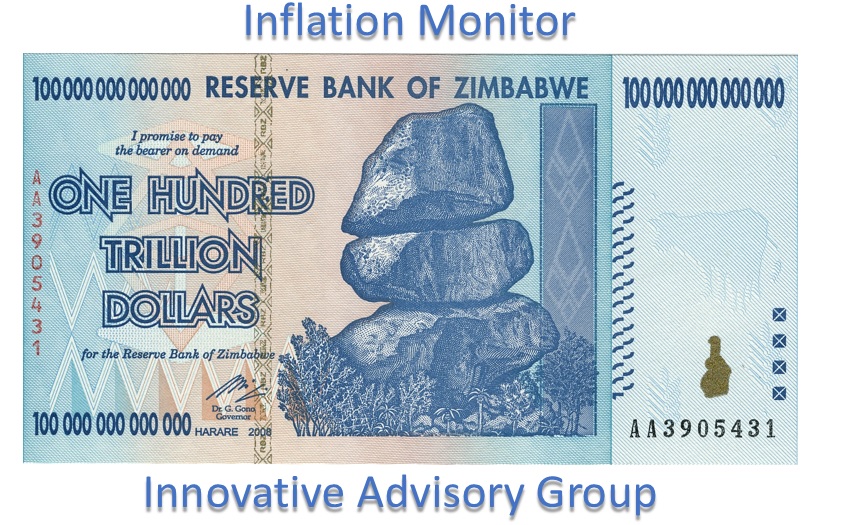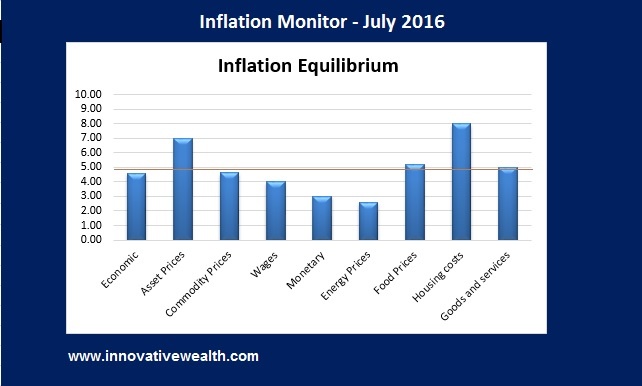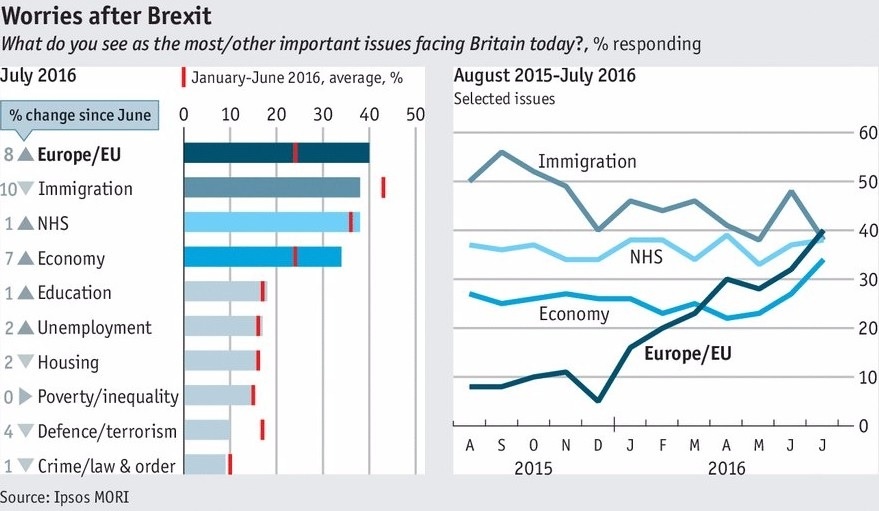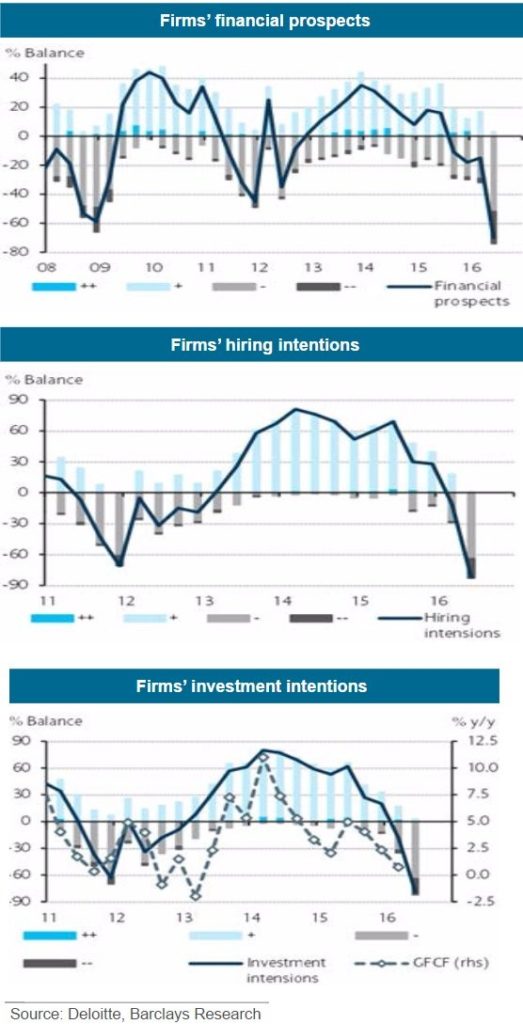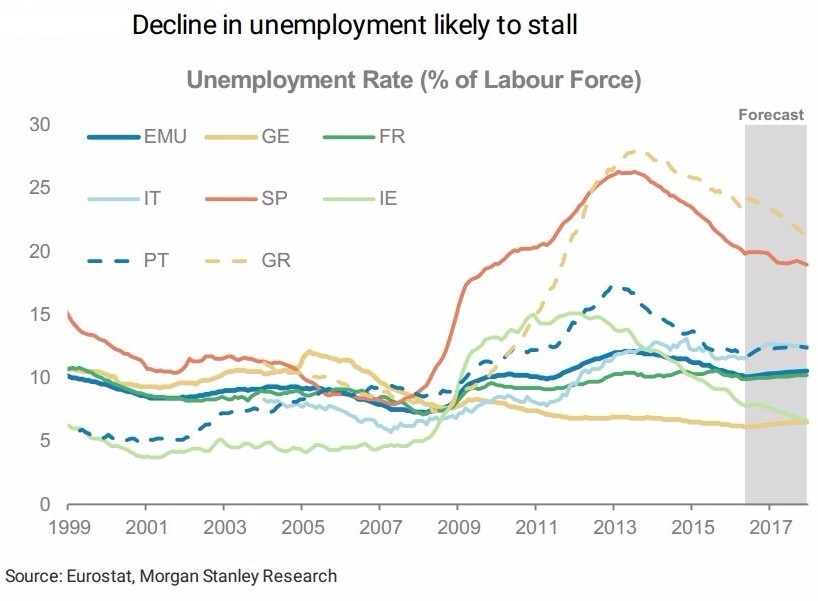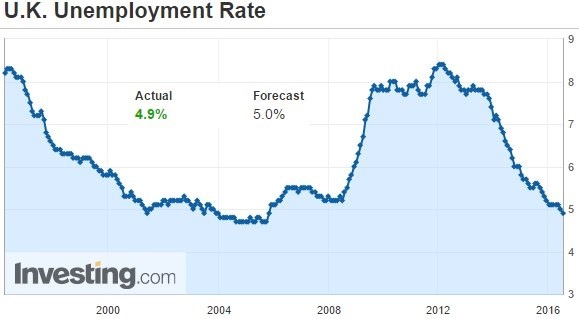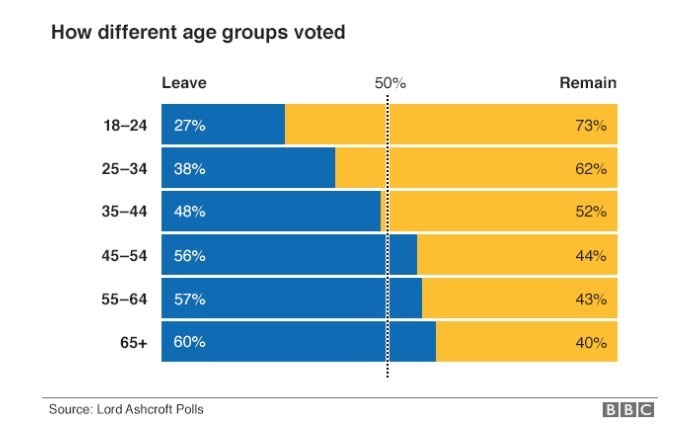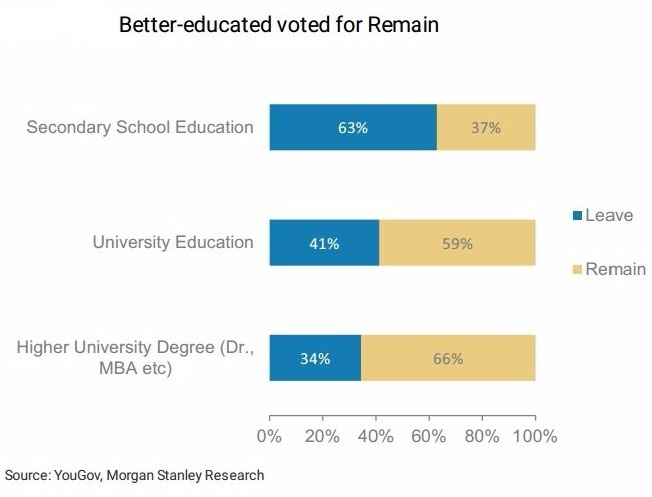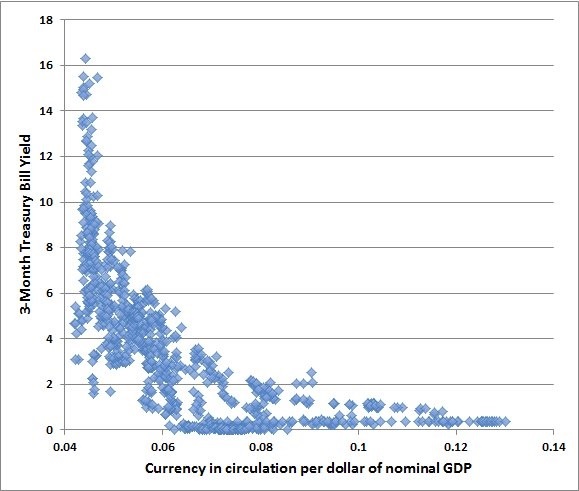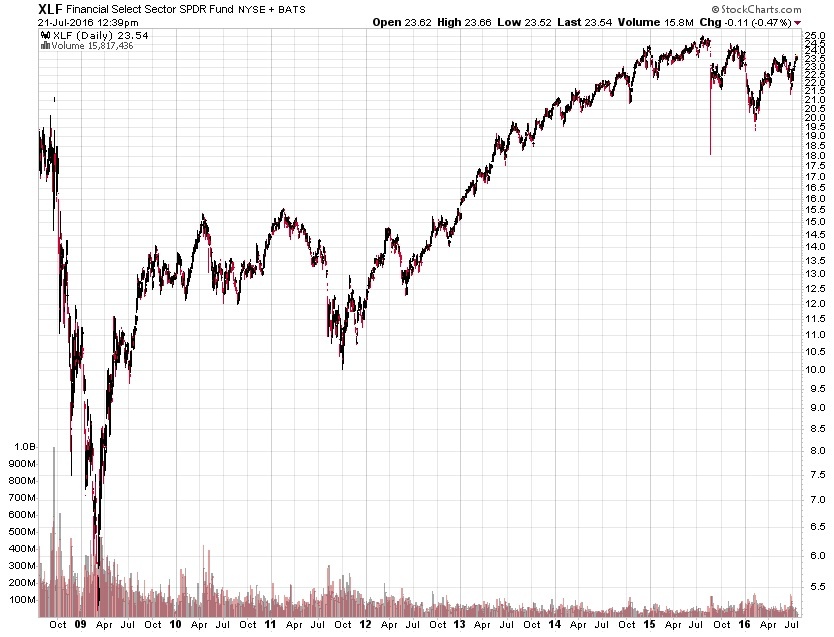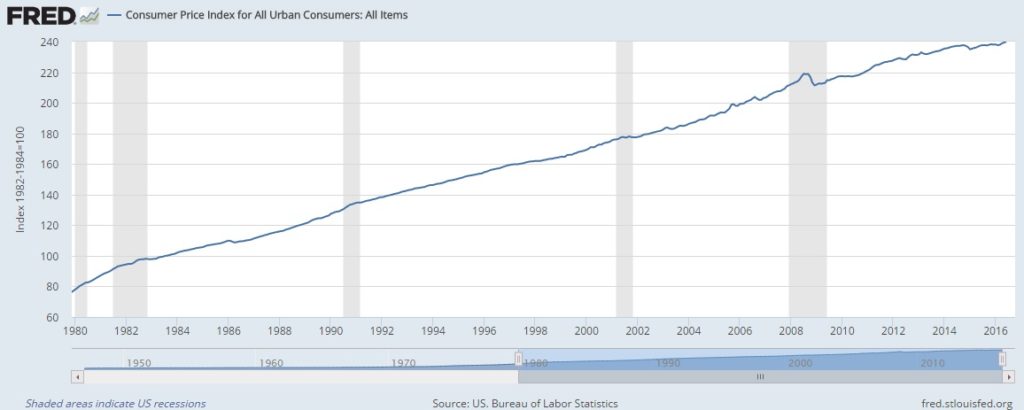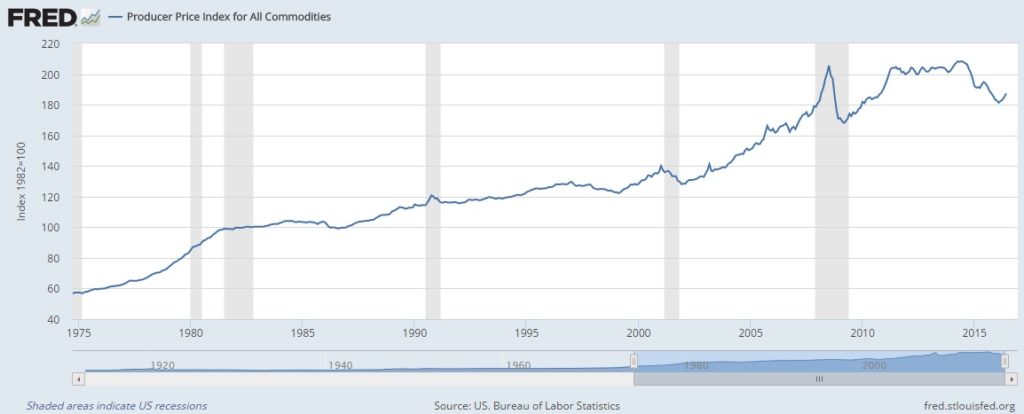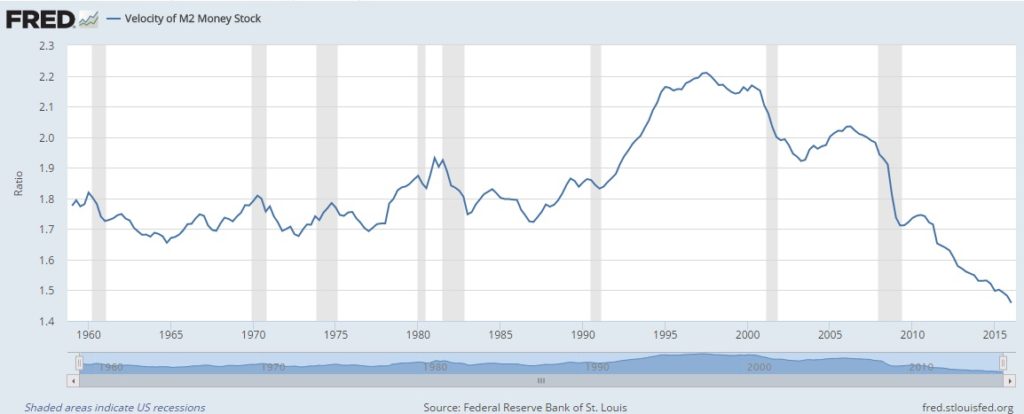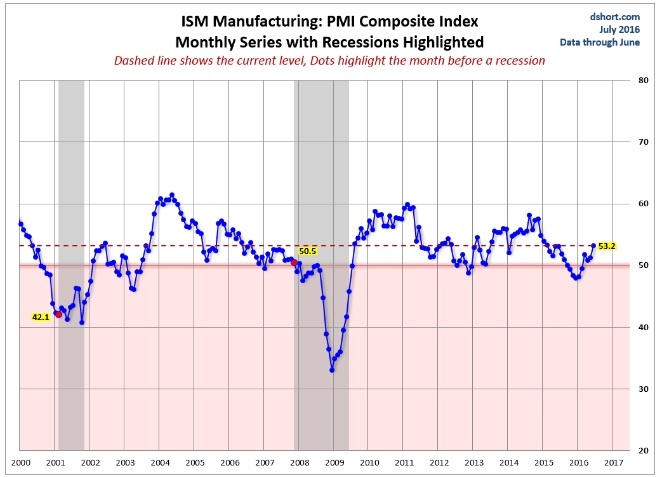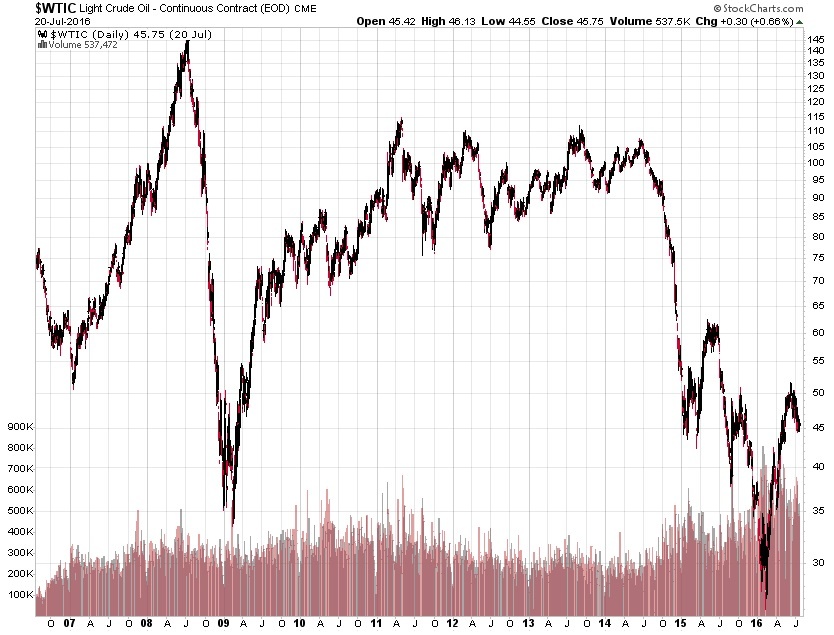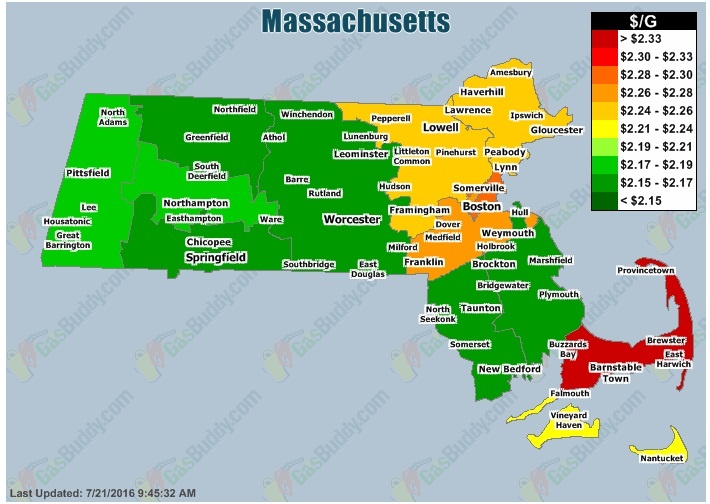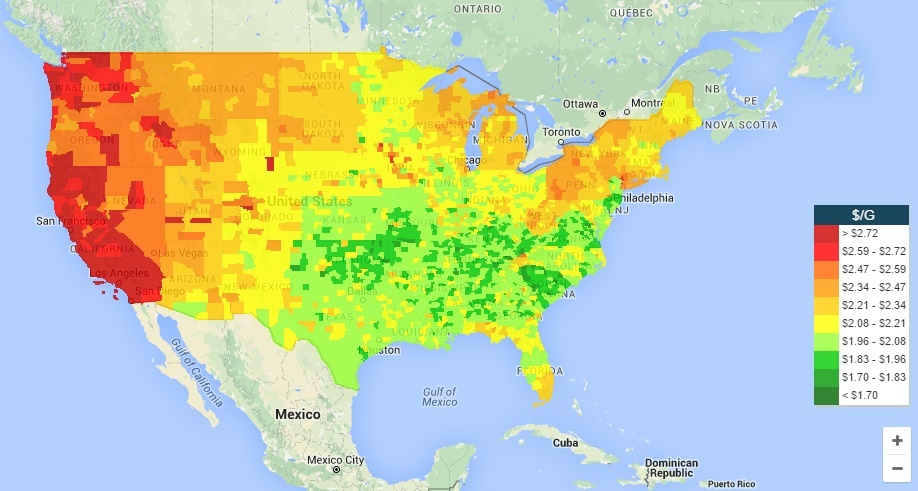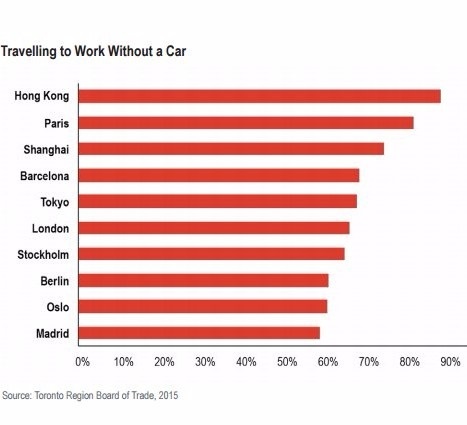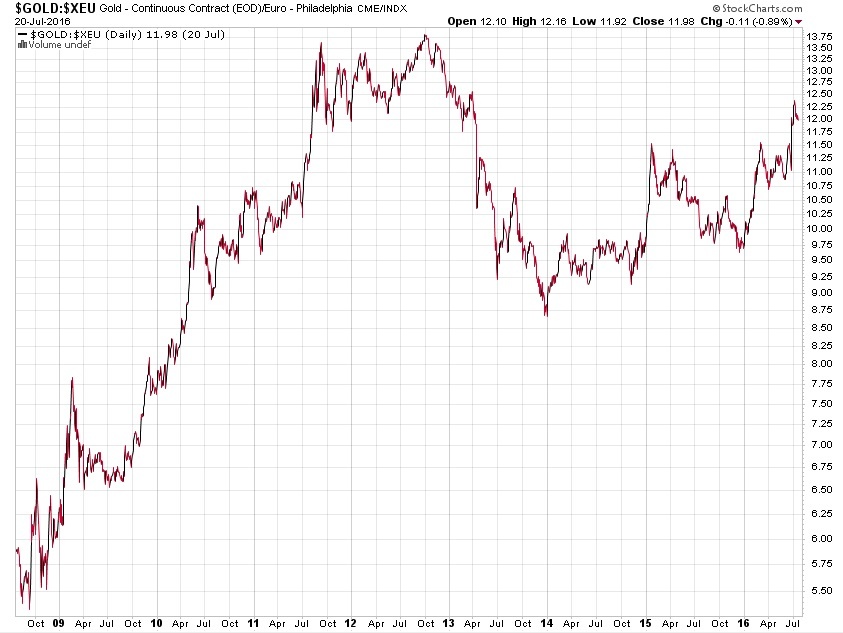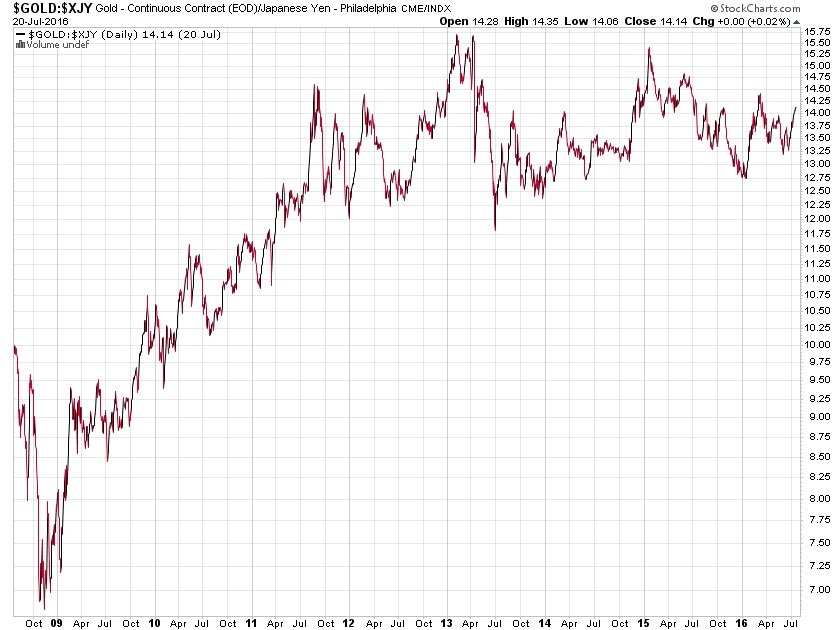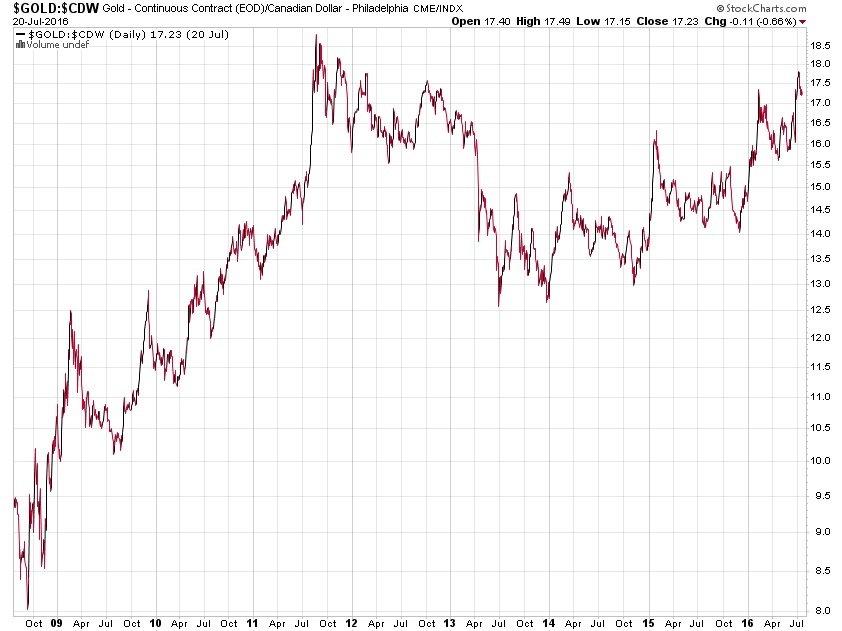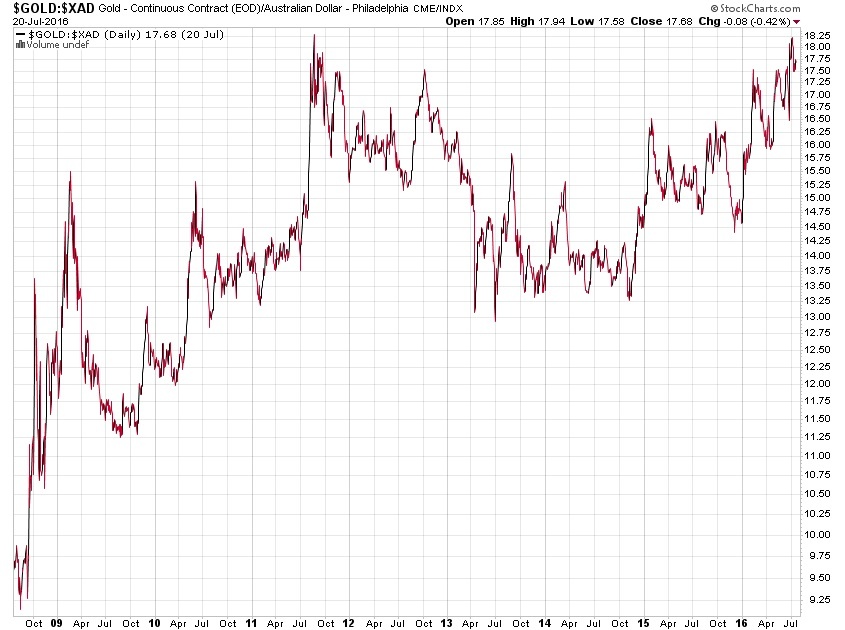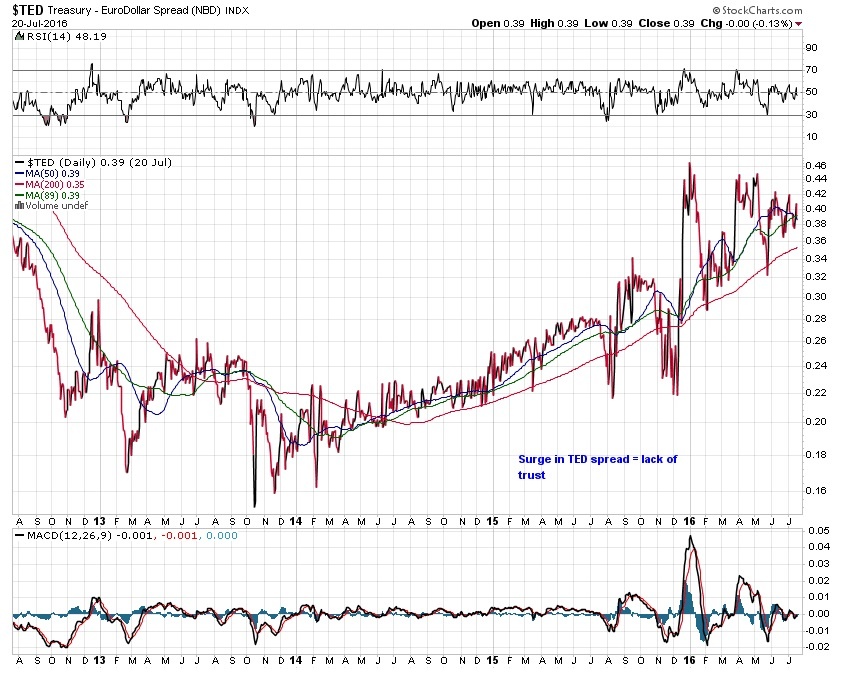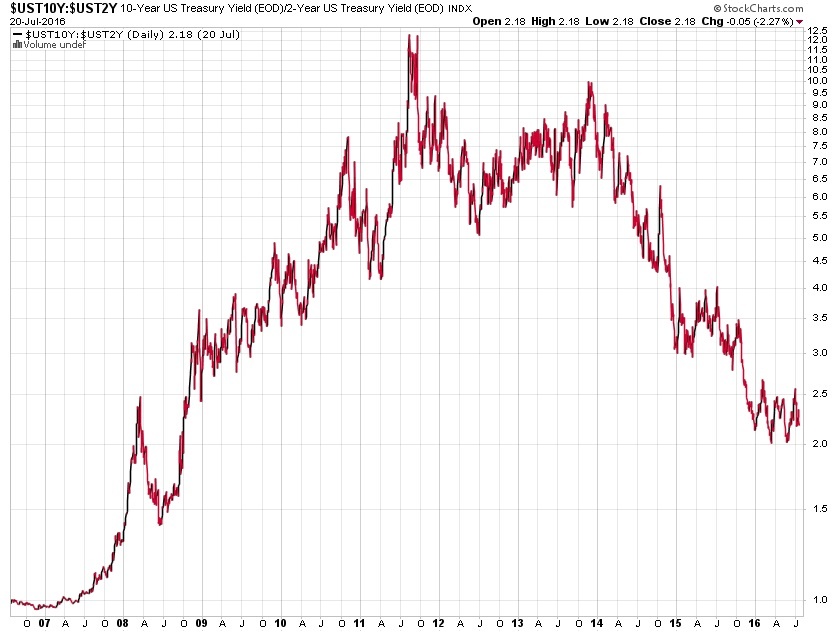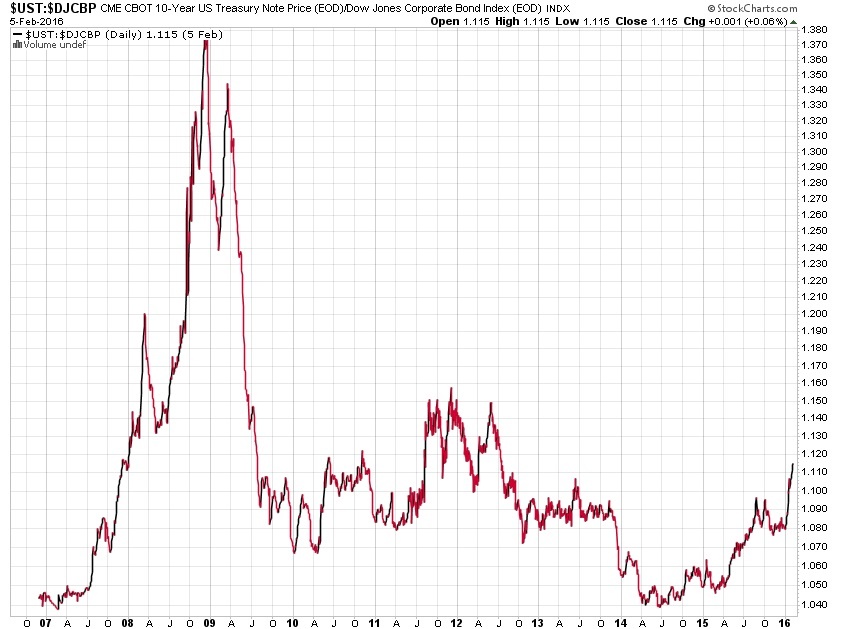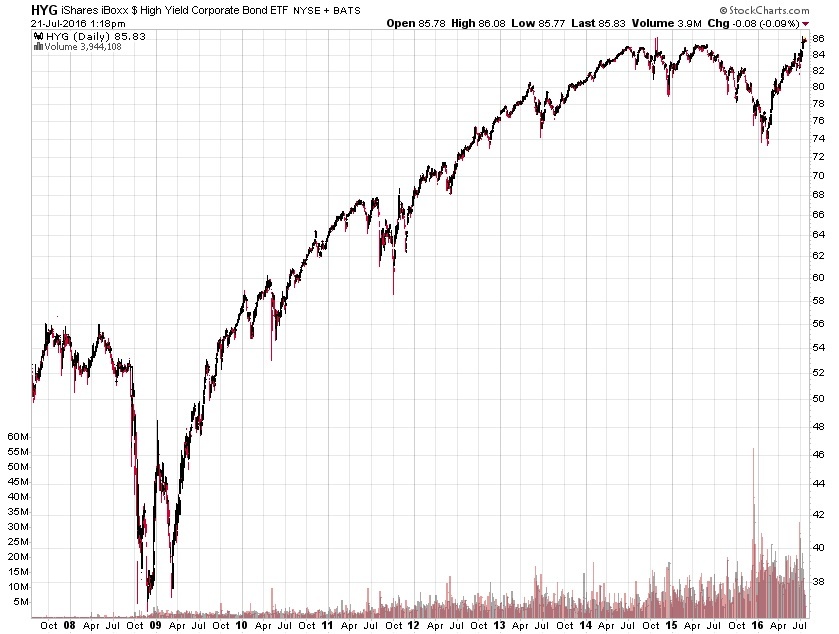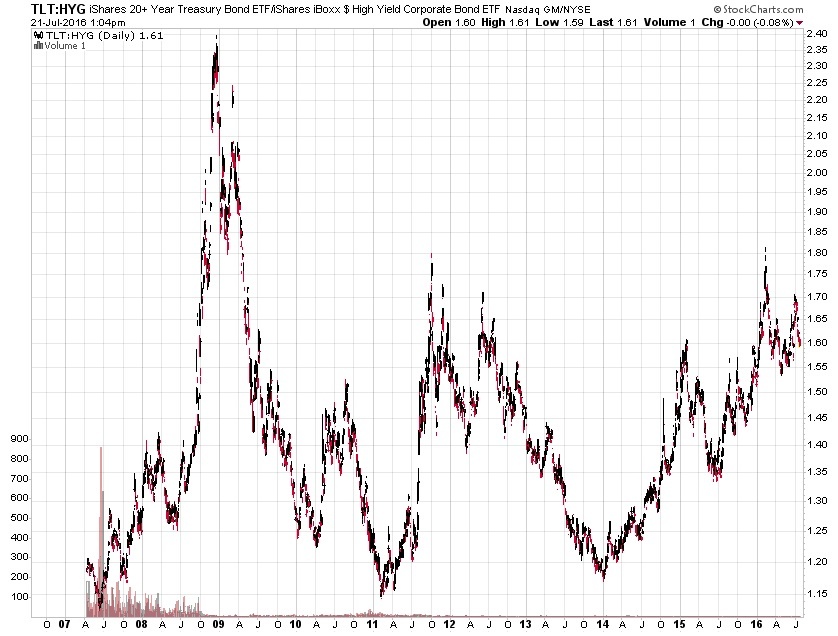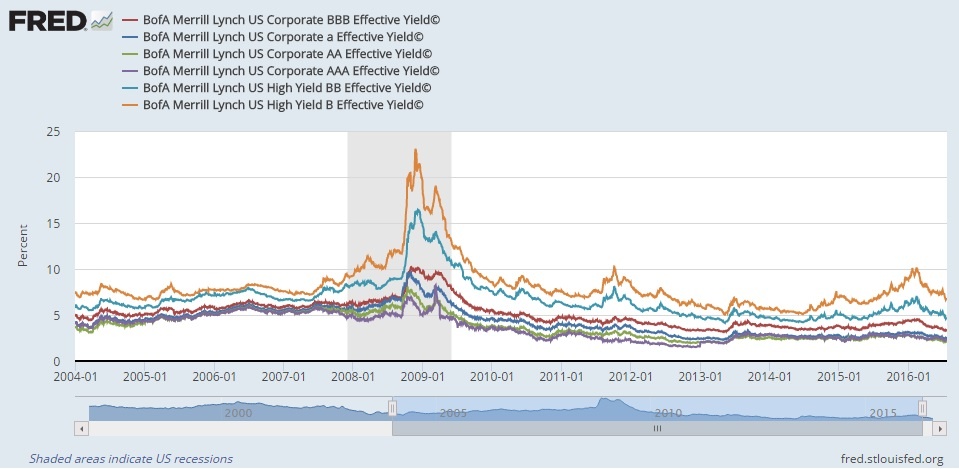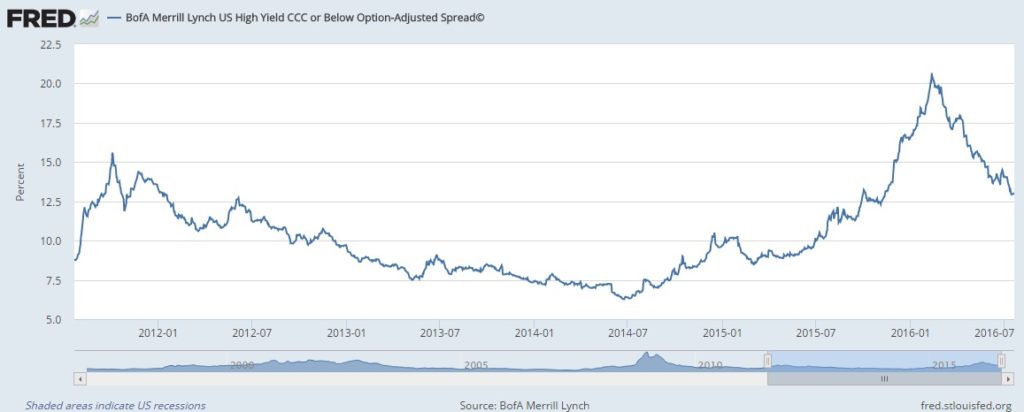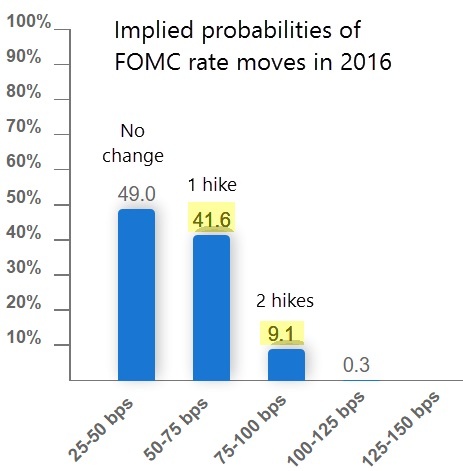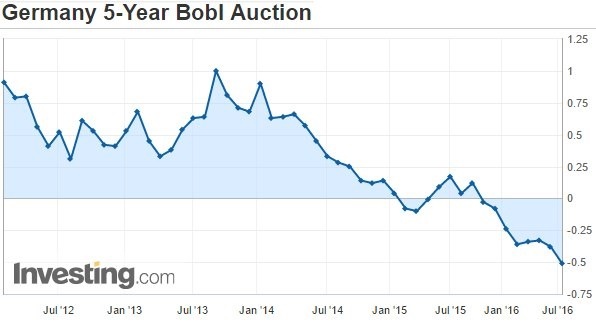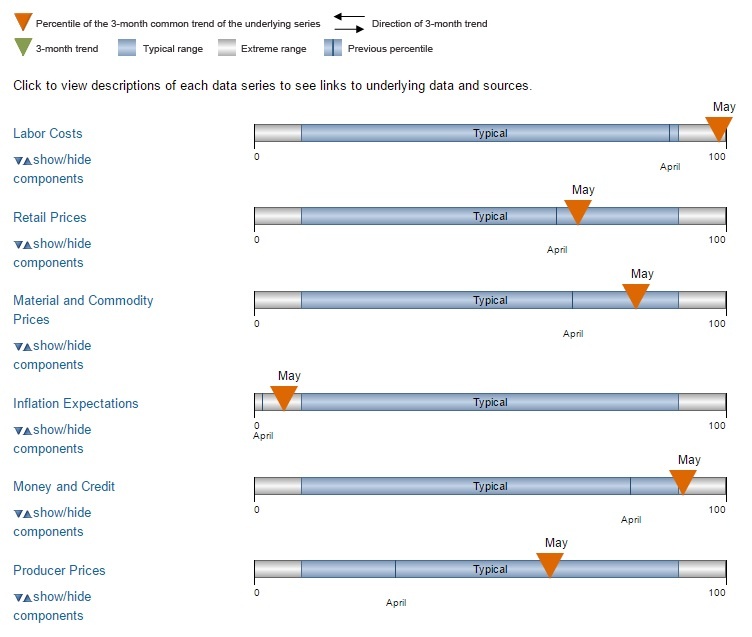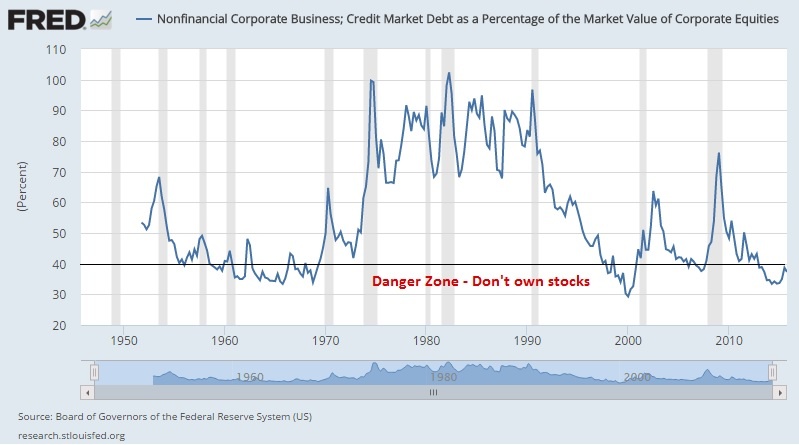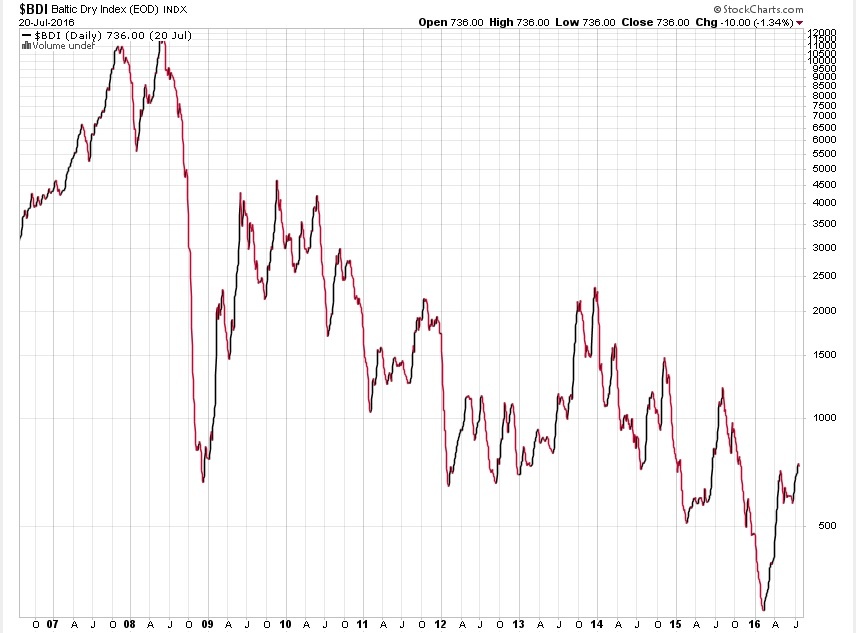| Index | Value | 1mo change | 1yr change | 5yr change | Inflation Score |
|---|---|---|---|---|---|
| Economic Inflation | |||||
| Consumer Price Index (CPI) | 241.04 | 0.33% | 1.01% | 6.79% | 2 |
| Producer Price Index (PPI) | 187.40 | 1.30% | -3.75% | -8.09% | 1 |
| 1 Yr Treasury Bill Yield | 0.55% | -0.04 | 0.27 | 0.37 | 2 |
| 10 Yr Treasury Note Yield | 1.46% | -0.21 | -0.97 | -1.54 | 2 |
| Real Interest Rate | -0.46% | -0.02 | -0.61 | 2.92 | 4 |
| US 10 yr TIPS | 0.03% | -0.31 | -0.54 | -0.62 | 2 |
| Capacity utilization | 75.40 | 0.67% | -1.31% | -0.66% | 2 |
| Industrial Production Index | 104.13 | 0.60% | -0.69% | 7.51% | 2 |
| Personal Consumption Expenditure Index | 12,699.4 | 0.42% | 3.66% | 19.21% | 4 |
| Rogers International Commodity Index | 2252.65 | 2.31% | 10.86% | -42.85% | 4 |
| SSA COLA | 0.00% | 0.00% | 3 | ||
| Median Income | $53.657.00 | 0.13% | 7.79% | 3 | |
| Real Median Income | $53,657.00 | -1.48% | -2.31% | 2 | |
| Consumer Interest in Inflation | Stable | 3 | |||
| IAG Inflation Composite | Strong Deflation | 1 | |||
| IAG Online Price Index | Slight Inflation | 4 | |||
| US GDP | 18230.10 | 0.36% | 3.29% | 19.63% | 4 |
| S&P 500 | 2102.95 | 0.17% | 1.23% | 58.69% | 3 |
| Market Cap to GDP | 123.30% | 122.40% | 90.10% | 5 | |
| Corporate Debt as % of Equity | 38.10% | 0.80 | 4.40 | -3.10 | 1 |
| US Population | 324,125 | 0.07% | 0.77% | 4.15% | 2 |
| IAG Economic Inflation Index* | Stable | 3 | |||
| Housing Inflation | |||||
| Median Home price | 247,700.00 | 3.68% | 4.82% | 41.06% | 4 |
| 30Yr Mortgage Rate | 3.57% | -0.03 | -0.41 | -0.94 | 5 |
| Housing affordability | 158.80 | -2.99% | -1.49% | 5 | |
| IAG Housing Inflation Index* | Strong Inflation | 5 | |||
| Monetary Inflation | |||||
| US Govt debt held by Fed (B) | 2,815.30 | 0.19% | 0.64% | 110.03% | 1 |
| US Debt as a % of GDP (B) | 105.68% | 1.51% | 2.83% | 12.03% | 2 |
| M2 Money Stock (B) | 12,763.20 | 0.69% | 7.00% | 40.55% | 4 |
| Monetary Base (B) | 3,840.64 | -0.37% | -2.67% | 43.95% | 2 |
| Outstanding US Gov’t Debt (B) | 19,264,939 | 1.81% | 6.13% | 35.00% | 4 |
| Velocity of Money [M2] | 1.46 | -1.55% | -2.60% | -15.17% | 1 |
| US Trade Balance | -41,144.00 | -9.90% | -2.42% | 12.87% | 1 |
| Big Mac Index | Expensive | 1 | |||
| US Dollar | 95.96 | 0.16% | 0.17% | 28.25% | 1 |
| IAG Monetary Inflation Index* | Strong Deflation | 1 | |||
| Energy | |||||
| Electricity (cents / KW hour) | 12.43 | -1.19% | -1.66% | 2 | |
| Coal (CAPP) | 41.10 | 1.48% | -4.71% | 2 | |
| Oil | 48.38 | -0.90% | -17.97% | -49.28% | 1 |
| Natural Gas | 2.93 | 28.16% | 4.08% | -32.96% | 3 |
| Gasoline | 1.50 | -5.86% | -26.53% | -49.40% | 1 |
| IAG Energy Inflation Index* | Strong Deflation | 1 | |||
| Food and Essentials | |||||
| Wheat | 445.75 | -4.04% | -27.46% | -26.75% | 1 |
| Corn | 373.25 | -7.67% | -13.05% | -38.31% | 1 |
| Soybeans | 1153.00 | 6.88% | 11.43% | -11.14% | 5 |
| Orange Juice | 178.30 | 16.38% | 51.04% | -5.16% | 5 |
| Sugar | 20.38 | 17.33% | 64.35% | -22.36% | 5 |
| Live Cattle | 114.85 | -5.12% | -22.61% | 3.63% | 1 |
| Cocoa | 2976.00 | -2.01% | -8.32% | -5.25% | 2 |
| Coffee | 146.00 | 20.16% | 12.31% | -44.88% | 5 |
| Cotton | 64.55 | 0.73% | -4.62% | -45.27% | 3 |
| Stamps | $0.47 | 0.00% | 2.17% | 6.82% | 3 |
| CRB Foodstuffs Index | 361.76 | -0.60% | -3.78% | -24.59% | 3 |
| IAG Food and Essentials Inflation Index* | Stable | 3 | |||
| Construction and Manufacturing | |||||
| Copper | 2.20 | 5.49% | -15.38% | -48.47% | 1 |
| Lumber | 308.70 | 2.69% | 6.82% | 25.69% | 4 |
| Aluminum | 0.76 | 8.57% | 4.11% | -35.59% | 1 |
| CRB Raw Industrials | 453.47 | 0.72% | -1.85% | -24.49% | 2 |
| Total Construction Spending (M) | 1,143,257.00 | -0.79% | 2.80% | 51.48% | 4 |
| ISM Manufacturing Index | 53.20 | 3.70% | 0.19% | -5.34% | 3 |
| IAG Construction & Manufacturing Index* | Mild Deflation | 2 | |||
| Precious Metals | |||||
| Gold | 1,324.80 | 8.78% | 13.00% | -11.77% | 4 |
| Silver | 18.82 | 17.45% | 20.49% | -45.85% | 4 |
| IAG Precious Metals Inflation Index* | Mild Inflation | 4 | |||
| Innovative Advisory Group Index | |||||
| IAG Inflation Index Composite* | Stable | 3 | |||
* If you would like a description of terms, calculations, or concepts, please visit our Inflation monitor page to get additional supporting information. We will continually add to this page to provide supporting information.
* Our Inflation Score is based on a proprietary algorithm, which is meant to describe the respective category by a simple number. The scores range from 1-5. One (1) being the most deflationary. Five (5) being the most inflationary. These scores are meant to simplify each item and allow someone to quickly scan each item or section to see the degree of which inflation or deflation is present.
* We have also added our own indexes to each category to make it even easier for readers to receive a summary of information.
Inflation Monitor Summary – Composite Ranking
* The Inflation Equilibrium is a quick summary of the whole data series of the inflation monitor. If you don’t like statistics, this is the chart for you.
Inflation Monitor – July 2016 – Introduction
“Debt is future consumption brought forward. Once debt is incurred, consumption that might have happened in the future won’t happen, and it should come as absolutely no theoretical surprise that at a certain level of debt, growth and income begin to diminish. That is exactly what we are seeing in the real world, even if those who espouse the reigning economic paradigm (Keynesianism) are still in love with their beautiful theory.”
I hope you had a happy Independence Day. A day that is in remembrance of the US’ independence from Britan. How ironic that only 11 days prior to our independence day, the UK declared its independence from the EU. If you don’t know about the Brexit, you must have been living in the woods for the past month. Everyone has been discussing this monumental vote with varying degrees of opinion as to what it could mean.
I have not wanted to discuss it much prior to the vote, because despite what you hear on TV, no one really knows what will happen. Sure there are plenty of “smart” people who have an opinion about what will happen. Some think the world will end, or we will spiral into WW3, others think it is a great thing for the UK. Let me rain on the parade of all these “smart” people. No one knows what will happen. There are too many variables to count and although there are some very important issues that may come up due to this vote, this has never happened before, so we have no reference point of what could happen.
Many people have some relevant thoughts on the issue, but in terms of what will happen, it is mostly political, so unless you know the minds of all the various politicians involved with the UK, EU, and each individual country, you cannot make a thoughtful prediction as to the outcome.
Here are some of the relevant points you should consider.
The UK voting to leave the EU will cause other countries to want to leave
Yes, this is true. However, it will also cause the EU to consider rethinking their politician heavyhandedness. The EU council has already signaled that they are willing to work with each country to make them happy. This is a huge concession for each country that is looking for significant considerations.
The UK will go into recession due to the Brexit
Maybe, but it is not certain that they would not have had a recession regardless of the vote. Also, the outcome of the vote may not come to pass for a few years in which nothing significant will change. You should also consider that the UK still has their own currency, the pound. This is helpful in stabilizing their country’s transition. Also, it is highly possible that nothing changes other than on paper. with all the trade agreements that need to be worked out, the end result could end up being no different than the current situation.
Interestingly enough, the bare minimum amount of change that could happen due to the Brexit is that nothing changes other than the UK will not have some foreign politicians telling the brits what to do. I think this is the most positive outcome of the Brexit.
It is probable that the UK could be entering a recession regardless of the vote. The whole world is slowing and contracting. This is a concept that investors need to understand. Expanding global trade causes deflation. The end of the cold war was the destruction of the largest trade barrier ever. This opened up many global markets and allowed countries such as the US to access low-cost labor reducing the cost of goods and services ultimately raising the standard of living in the US. The period of time from the end of the cold war
The end of the cold war was the destruction of the largest trade barrier ever. This opened up many global markets and allowed countries such as the US to access low-cost labor reducing the cost of goods and services ultimately raising the standard of living in the US. The period of time from the end of the cold war
Let’s use the US as an example for this discussion because it is most relevant to you and other countries may not see the same impact as the US. The period of time from the end of the cold war until 2000, the world was in an expansionary phase. This caused deflation in the price of US goods. Since 2000, the world has been in a contractionary phase where globalization slows or even contracts. This causes inflation in the price of those goods.
Think about it this way, 50 years ago certain goods were made in the US, now many of those same goods are made in China or other countries that can provide cheap labor.
Many people are confused by this dynamic. This is exactly why we take inflation and break it into different components so you can see what is experiencing inflation and what is experiencing deflation. If the US brings home many of the jobs it exported in previous years, this will cause inflation in the price of goods and services, however, it may also come at a time when the US enters a recession, which is typically deflationary (consumers spend less). Hopefully, you can see the complicated dynamics that are in play. I briefly discussed this in one of my prior posts, The Inflation-Deflation Balancing Act. Most people think we have either inflation or deflation, yet they don;t understand that the degree of inflation
Most people think we have either inflation or deflation, yet they don’t understand that the degree of inflation is not absolute and it does not refer to only one thing. For example, many people conclude that the Federal Reserve has printed an enormous amount of money, thus we will have hyper-inflation. This thinking is incorrect. If this were the case, then why after 8 years do we not have high inflation? Right now it is barely positive. Well under the Federal Reserve’s target rate. These people should be worrying about deflation rather than inflation.
These people should be worrying about deflation rather than inflation. When many countries have negative interest rates on their 1, 5, and 10-year bonds. Investors need to protect themselves from this type of environment. However, many do not recognize it for what it is. Hopefully, you as readers of the Inflation Monitor will recognize this type of environment for what it is and be able to profit from it. A lot of wealth will be destroyed over the next 10-20 years due to this deflationary environment. If you understand how to navigate it, you will benefit from it and be in a better place when it resides in favor of the next cycle.
Now that we have mentioned the unlikely Brexit vote, here is another unlikely event, The S&P 500 closing at all-time highs and the US Treasury closing at all-time lows. Here is what Bloomberg reported on Friday, July 8th,
It isn’t supposed to happen that way – in fact, it never has. At no time in history have government bonds and U.S. equities, generally viewed as risk-on/risk-off complements, ended the same trading session this close to their respective records, according to data compiled by Bloomberg…
“The stock market and bond market are expressing very different opinions,” said Jack Ablin, the Chicago-based chief investment officer of BMO Private Bank, which oversees about $66 billion. “It seems, at least on the surface, to be incongruous. Obviously I’m happy for the bulls, but I get the sense that there’s something dysfunctional going on.”
Maybe this has to do with the $13 Trillion of global negative yielding debt. This enormous amount of negative yielding debt is causing a black hole with inescapable gravity pulling down the yields of other countries. It is only a matter of time before the US succumbs to the gravitational forces of negative yield bonds.
On July 7th, Swiss government debt became the first ever to have negative interest rates along the entire yield curve. This extends to 50-year bonds with a yield of -0.0119%. What is this world coming to when anyone in their right mind is willing to “pay” the Swiss government 0.0119% a year for 50 years for the opportunity to loan the Swiss government money? ( end sarcasm) Japan is not quite there yet. Their yield curve only extends on the negative side up to 20 year JGBs.
It is official, we live in the financial twilight zone. I don’t see how any of this could end well… unless you own gold and cash.
I hope you enjoy this month’s Inflation Monitor – July 2016.
Kirk Chisholm
As always, please contact me with any questions or to send your feedback. Thank you for reading.
Join our email list to receive the Inflation Monitor sent directly to your inbox.
Reference Pages:
- Historical Inflation Rates
- Inflation – The Secret To Building Wealth In Real Estate
- Deflation – How a Mortgage Can Destroy Your Real Estate Wealth
Charts of the Month
Brexit
Wow. It really happened, is the sentiment the whole world is feeling. Many people are going to have to rethink their macro thesis based on this dramatic event. In reality, nothing has changed yet. There will definitely be changes over the next few years, but for now, the markets and corporations are trying to plan for future events given this change. Since there are even more unknowns now about the future, this may be the biggest factor affecting the UK and European economies. It is hard to plan for the future when you cannot be certain of it. Yes, I know it is a bit of an idiotic statement, but most companies attempt to plan for future expenditures and adjust when things change. However, waiting 2 + years to find out whether your company is going to expand to the UK or EU is too long for most companies. Here are some charts this you should consider.
The biggest unknowns are whether we should expect a Grexit, Quitaly, Nexit, Denparture, or Frexit. I’m sure people with better wit than I can come up with some good marketing names to use for the next vote to leave the EU.
Here are some charts this you should consider.
It should be noted that while firms may be more negative on their prospects, this trend did not start with the Brexit.
Interesting Inflation Charts
I think I am going to make this chart a permanent part of this inflation monitor so that the importance of it is not missed. John Hussman put this chart in one of his weekly reports a while ago. If I could find the report, I would link to it. You should definitely read his weekly reports. It was a great report about how interest rates relate to the amount of money in circulation. The basic idea is that as rates climb higher, there is less money in circulation, and when rates are low as they are today, there can be an enormous amount of money in circulation without causing high inflation. This idea is a basic concept in economics, however, what is most interesting is seeing this visually.
Think of it this way, if hypothetically the US government can support a debt of $100 at a 5% rate of interest ($5 a year), then how much can the US support at 0.05%? $10,000 or a 100x increase. If rates are at zero, then the number becomes infinite. Now, what if interest rates are negative, why wouldn’t the US print an infinite amount of money?
Obviously, this is hypothetical, but it is important to understand this principal. Once you do, then this is the important part you don’t want to miss. Look at the slope of the curve in this chart. While you may be able to exponentially increase the supply of money without increasing your debt service, the hard part is when you try to increase rates. You will learn very quickly that the debt is unsustainable. If you want to see why interest rates will not rise quickly around the world, this is it. Once you have created $10,000 in debt you will have to reduce it by 99% to reach the 5% rate you had originally. What are the chances of this happening?
Leading Indicators
Dr. Copper
Dr. Copper is still weak, despite the recent bounce. Much of this has to do with global demand… or the lack of it. Primarily this demand has come from China in the past 10 years. Unless China restarts its economy with a push for more manufacturing, it might be a while before copper regains its former highs. Copper prices are consolidating at these levels.
Financials
Fed decided to raise interest rates in December. There hasn’t been one since. There is about a 50% change they will raise before the year is done, but given the fact that the Fed is more worried about the global economy than the US, I don’t expect to see much. The big question is, how is the financial sector going to make money when the spread is shrinking and rates continue to drop and go negative? How will insurance companies and pension funds survive?
Consumer Price Index (CPI)
The CPI is flat for the year. It just started picking up again. If you have read this Inflation Monitor report for the last 12 months you will know that strong deflationary forces are here to stay. The Fed does not want deflation in the US, but can they stop it?
Producer Price Index (PPI)
The Producer Price Index is continuing to have a rough time this year. The declining PPI might be a reflection of the new economic conditions of producers and manufacturing with a high value of the US Dollar. This makes it harder for US companies to export goods since they will be about 20% more expensive from where they were last year.
US Velocity of Money M2
There is just no sign of stopping this falling safe. I’ll believe in the hyper-inflation tooth fairy when this starts to turn up in a meaningful way.
ISM Manufacturing
There has been a small tick up in the past month. It is back over 50, meaning that there is growth.
Oil Prices
Rystad Energy just released an independent study that shows the US is considered to have more oil reserves than Saudi Arabia or Russia. This is the first time in history where the US has held this title. The study estimates the recoverable oil available in the U.S. at 264 billion barrels. Saudi Arabia has about 212 billion barrels and Russia has about 256 billion barrels.
“We keep thinking that lower energy prices are somehow good for the economy. That can’t be, because energy prices or commodity prices in general don’t drive economic growth. Economic growth drives commodity prices.”
~Stephen Schork
Massachusetts Gas Prices
US Gas Prices
It might surprise a few people how many people walk to work in other countries.
Currency Relative Valuations to Gold
Gold is priced in the currency you use every day. If you live in the European Union, you use Euros, if you live in Japan, you use Yen, and if you live in the US you use US dollars. Each of these currencies is used to buy gold in their respective countries, so we look at gold priced in each country to see how people value it in their own currency. This can tell us a lot about the demand for gold inside and outside the US.
Gold prices are they strong or weak?
The best way to look at any commodity, especially gold, is to compare the commodity to multiple currencies. If gold is rising or falling in US Dollars, that means nothing if the other currencies are not showing the same thing. A true bullish trend in gold is when gold is rising in all (or at least most currencies).
For the past few months, gold has consolidated in the US and weakened in other currencies.
Gold Priced in Euros
Gold Priced in Yen
Gold Priced in Canadian Dollars
Gold Priced in Australian Dollars
Bonds
TED Spread
A surge in the Ted Spread means a lack of trust in financial institutions. Currently, the Ted Spread is on the high side. It is far from the 2008 highs of 4.6, but the upward trend is not a good sign since it is confirming many other indicators.
10 year vs. 2 year Treasury Spread
The flattening (or inverting) of the yield curve is not good for banks and also typically shows signs on a recession. It is probably one of the best indicators of a recession we have, yet no one knows the status of whether this indicator still works since interest rates are stuck at zero… sorry 0.25% – 0.50%. What happens if the US has negative interest rates? what will the curve look like then?
Treasury vs Corp Bond Spread
The spread between 30-year treasuries and corporate bonds is climbing, as it can be in times of market distress. It will be interesting to see how this plays out as interest rates start to rise… assuming they ever do. Most markets have shown some relief from the risk off pressures earlier this year, but this number is still rising.
High Yield Bonds (Junk Bonds)
High yield bonds have had a good run of very low default rates. 2014 was around 1%. During recessions, these default rates tend to climb up to around 10% (1991, 2001, 2002, and 2009). This is fine unless you are getting 5% on your high yield bond income. In that case, you would net -5% a year. I’ll bet that is not quite what you had in mind when you were looking for income.
The end of 2015 and early 2016 went through a tumultuous period of time in the high yield bond market. 3 high-yield funds closed their doors in a matter of 3 days due to investors pulling their money out. You can read about this turmoil and the blueprint for financial contagion in my 2015 year end recap.
While the rebound in high yield bonds seems to suggest the worst is over, the “bad” bonds have not yet cleared. Unless oil prices continue to shoot back to $100/ barrel, I would suggest that there is still more bad news to come from the oil sector.
I think I am going to bring back “WTF” into my lexicon. HYG has broken out to all-time highs. Pair this with increasing default rates of high yield bonds, and you end up with disaster… eventually. Many high yield bond experts suggest that the high yield bond market is “frothy”. I think that is an understatement.
This shows the price of 30-year treasuries vs high yield bonds. A higher spread means the market is seeing more risk. lower spread means the market is seeing less risk.
Bond Yield Spread
High Yield Bond Spread
The high yield bond market is continuing to cool down. This is a good sign for the overall market.
The probability of a Fed rate hike is still in the cards this year.
Germany 5 year bond yield -0.50%. In what world does that make sense?
Inflation Dashboard
I like this view from the Federal Reserve because it gives more of a visual perspective of the data presented above.
Corporate Debt as a Percentage of Equity
Baltic Dry Index
After breaking below the index all-time lows late last year, it has rebounded since then. It could be the rise in oil prices, or just that the index can only go so low, where any increase in activity would push it up. While this indicator is not all that important, it is just another piece of information that the global economy is not doing well. Until we see a sustained pickup in dry shipping, the global economy is still not strong.
I hope you enjoyed this month’s Inflation Monitor. See you next month.
Cheers,
Kirk Chisholm
The IAG Inflation Monitor – Subscription Service
We have been publishing this Inflation Monitor as a free service to anyone who wishes to read it. We do not always expect this to be the case. We expect to charge a small fee for this service starting in 2017. The high amount of interest in this service has put constraints on us to provide more, so this small fee should cover our costs for providing this excellent resource. Our commitment to our wealth management clients is to always provide complimentary access to this research. If you would like to discuss becoming a wealth management client, feel free to contact us.
If you would like to automatically receive the Inflation Monitor in your email inbox each month, click here to join our subscription service.
Sources:
- Federal Reserve – St. Louis
- U.S. Energy Information Administration
- TD Ameritrade
- National Association of Realtors
- The Economist
- The Commodity Research Bureau
- Gurufocus.com
- Stockcharts.com
- GasBuddy
* IAG index calculations are based on publicly available information.
** IAG Price Composite indexes are based on publicly available information.
About Innovative Advisory Group: Innovative Advisory Group, LLC (IAG), an independent Registered Investment Advisory Firm, is bringing innovation to the wealth management industry by combining both traditional and alternative investments. IAG is unique in that we have an extensive understanding of the regulatory and financial considerations involved with self-directed IRAs and other retirement accounts. Innovative Advisory Group advises clients on traditional investments, such as stocks, bonds, and mutual funds, as well as advising clients on alternative investments. IAG has a value-oriented approach to investing, which integrates specialized investment experience with extensive resources.
For more information, you can visit: innovativewealth.com
About the author: Kirk Chisholm is a Wealth Manager and Principal at Innovative Advisory Group. His roles at IAG are co-chair of the Investment Committee and Head of the Traditional Investment Risk Management Group. His background and areas of focus are portfolio management and investment analysis in both the traditional and non-traditional investment markets. He received a BA degree in Economics from Trinity College in Hartford, CT.
Disclaimer: This article is intended solely for informational purposes only, and in no manner intended to solicit any product or service. The opinions in this article are exclusively of the author(s) and may or may not reflect all those who are employed, either directly or indirectly or affiliated with Innovative Advisory Group, LLC.

